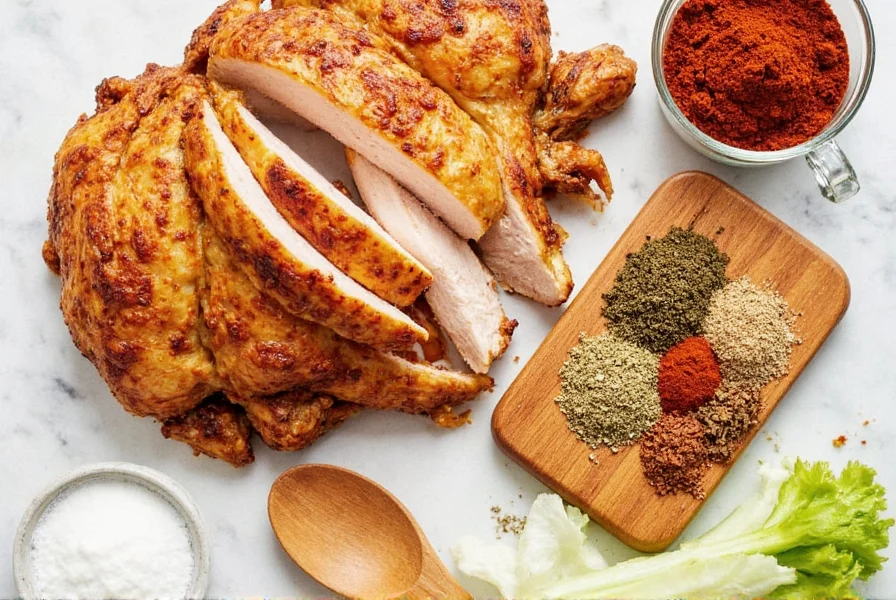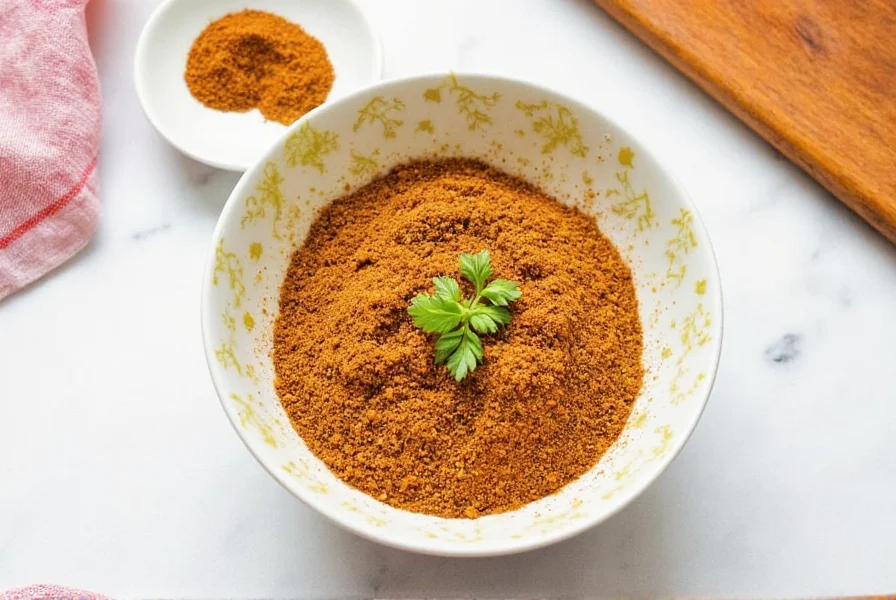Tinga chicken seasoning is a traditional Mexican spice blend used to flavor shredded chicken in the dish "tinga de pollo." It typically includes cumin, oregano, chili powder, garlic powder, onion powder, salt, and pepper. This guide explains how to make it at home, how to use it, and where to find the best blends for authentic Mexican flavors.
What Is Tinga Chicken Seasoning?
Tinga chicken seasoning is the essential spice mix that defines the signature smoky, slightly spicy flavor of tinga de pollo. Unlike generic Mexican seasonings, this blend is specifically formulated for slow-cooked shredded chicken dishes with a tomato-based sauce. The seasoning creates a balanced profile where earthy cumin, bright oregano, and controlled chili heat work together to enhance—not overpower—the chicken.
Key Ingredients in Tinga Chicken Seasoning
Each spice in tinga seasoning serves a distinct purpose to create its characteristic flavor profile. Here's what makes it unique:
| Spice | Flavor Profile | Role in Tinga |
|---|---|---|
| Cumin | Earthy, smoky | Base for depth and warmth |
| Oregano | Herbal, slightly bitter | Adds brightness and freshness |
| Chili Powder | Heat, subtle smokiness | Provides the signature kick |
| Garlic & Onion Powder | Savory, sweet, umami | Enhances overall richness |
How to Make Tinga Chicken Seasoning at Home
Creating your own blend ensures freshness and allows customization. Follow this simple recipe:
- Ingredients: 2 tbsp chili powder, 1 tbsp cumin, 1 tbsp dried oregano, 1 tsp garlic powder, 1 tsp onion powder, 1 tsp salt, ½ tsp black pepper
- Instructions:
- Combine all ingredients in a small bowl
- Whisk thoroughly until fully blended
- Store in an airtight container away from light and heat
- Customization Tips:
- For extra smokiness: Add ½ tsp smoked paprika
- For more heat: Increase chili powder to 3 tbsp
- For brighter flavor: Add 1 tsp coriander
How to Use Tinga Chicken Seasoning
Proper application maximizes flavor in your dishes:
- For traditional tinga de pollo: Rub 2 tbsp seasoning on 2 lbs chicken thighs, then simmer in tomato sauce for 45 minutes
- For quick weeknight meals: Mix 1 tsp seasoning with 1 tbsp olive oil, then toss with roasted vegetables
- For protein enhancement: Use as a dry rub for grilled fish or tofu (1 tbsp per serving)
- For sauces and dips: Blend 1 tsp seasoning with sour cream for instant chip dip
Buying Guide: Finding the Best Tinga Chicken Seasoning
When purchasing pre-made blends, look for these quality indicators:
- Ingredient transparency: Avoid blends with artificial flavors or fillers
- Spice freshness: Check for vibrant color and strong aroma
- Regional authenticity: Mexican-made blends often have traditional ratios
Top Recommendations:
- La Cocina Mexicana: Best for traditional recipes (natural ingredients, balanced heat)
- El Sabor Original: Ideal for professional chefs (includes coriander for depth)
- Spice Market Co.: Best for health-conscious cooks (organic, gluten-free)
Tips for Spice Lovers and Professionals
- Pairing secrets: Add 1 tbsp lime juice to finished dishes to balance heat
- Storage hacks: Keep in the freezer to extend shelf life by 50%
- Multi-use applications: Try in bean soups, rice dishes, or as a taco filling base
Frequently Asked Questions
What is tinga chicken seasoning made of?
Tinga chicken seasoning typically contains a blend of cumin, oregano, chili powder, garlic powder, onion powder, salt, and pepper. Some variations may include coriander, chili flakes, or tomato powder for additional depth of flavor. The specific ratio of these ingredients creates the distinctive smoky, slightly spicy profile that defines authentic tinga.
How spicy is tinga chicken seasoning?
The heat level of tinga chicken seasoning typically ranges from mild to medium, depending on the specific blend and brand. Traditional tinga is not meant to be extremely hot but rather offers a gentle warmth that complements the other flavors. Most commercial blends are designed to be approachable for a wide range of palates while still providing that characteristic Mexican spice profile.
What's the difference between tinga seasoning and other Mexican seasonings like taco or fajita seasoning?
While there are similarities, tinga seasoning has a distinct profile. It typically contains more cumin and oregano than taco seasoning, and often includes tomato elements that give it a richer base for simmering dishes. Unlike fajita seasoning which focuses on pepper flavors, tinga seasoning is designed specifically for slow-cooked shredded chicken dishes with a tomato-based sauce, resulting in a more complex, layered flavor profile.
Can I make my own tinga chicken seasoning at home?
Absolutely! Making your own tinga seasoning is simple and allows you to customize the flavor to your preference. A basic homemade blend includes 2 tablespoons chili powder, 1 tablespoon cumin, 1 tablespoon dried oregano, 1 teaspoon garlic powder, 1 teaspoon onion powder, 1 teaspoon salt, and ½ teaspoon black pepper. Mix these thoroughly and store in an airtight container. You can adjust ratios to suit your taste—add more cumin for earthiness or more chili powder for heat.
How should I store tinga chicken seasoning?
For maximum freshness and potency, store tinga chicken seasoning in an airtight container away from direct sunlight, heat, and moisture. A cool, dark cupboard is ideal. Properly stored, commercial blends can last 1-2 years, while homemade blends are best used within 6 months for optimal flavor. Avoid storing spices above the stove or near other heat sources, as this accelerates flavor degradation.
What dishes can I use tinga chicken seasoning in besides tinga de pollo?
Tinga seasoning is incredibly versatile! Beyond the traditional shredded chicken dish, try it in: As a rub for grilled or roasted meats, Stirred into soups and stews for extra depth, Added to bean dishes or rice for Mexican-inspired sides, Mixed with mayonnaise or sour cream for flavorful dips, Seasoning for roasted vegetables or potatoes, As a base for salad dressings with lime juice and olive oil. The possibilities extend far beyond just chicken dishes!
Conclusion
Tinga chicken seasoning transforms ordinary chicken into an authentic Mexican masterpiece. By understanding its core ingredients, mastering proper usage techniques, and selecting quality blends, you can consistently create restaurant-quality dishes at home. Whether you're making traditional tinga de pollo or experimenting with new applications, this versatile spice blend is a must-have in any kitchen.














 浙公网安备
33010002000092号
浙公网安备
33010002000092号 浙B2-20120091-4
浙B2-20120091-4